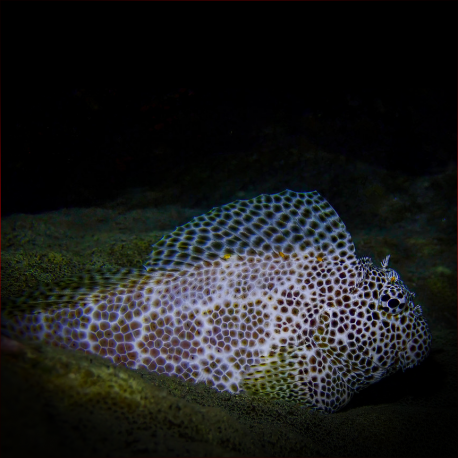More info
Datasheet
| Minimum Tank Size | 500 litres / 132.09 US gallons |
| Maximum Size | 15.0cm / 5.91inches |
| Reef Compatible | Not reef safe |
| Temperament | Aggressive towards similar species |
| Temperature | 22.2°C / 71.96°F - 25.6°C / 78.08°F |
| Specific Gravity | 1.020-1.025 |
| Carbonate Hardness | 8-12 |
| pH | 8.1-8.4 |
General Description: The Leopard blenny, scientifically known as Exallias brevis, is a species belonging to the Blenniidae family. They are native to the Indo-Pacific region, ranging from the Red Sea down to Sodwana Bay in South Africa and across to various islands such as Hawaii and New Caledonia.
Aquarium Suitability: Despite their striking appearance, Leopard blennies are not suitable for home aquariums due to their specific dietary requirements. They primarily feed on coral polyps and will not survive on alternative foods. Thus, unless provided with live corals in captivity, they are unlikely to thrive.
Demands, Care, and Hardiness: This species is considered to have average hardiness and requires a tank size of at least 500 liters. Leopard blennies need abundant hiding places, such as among live rocks, to mimic their natural habitat and ensure their well-being. They prefer water conditions with a pH range of 8.1-8.4, a temperature between 22.2-25.6°C, and a specific gravity of 1.020-1.025.
Reef Suitability: Leopard blennies are not considered reef-safe due to their exclusive diet of coral polyps, making them incompatible with reef environments where coral preservation is essential.
Aquarium Setup: Setting up an aquarium for Leopard blennies should include live rocks with ample crevices for hiding, as well as a stable tank environment with appropriate water parameters. Providing microalgae like spirulina and small polyp stone corals (SPS) can help mimic their natural diet.
Behaviour: These blennies are known for their aggressive behavior towards similar species, making them better suited for tanks without other territorial or aggressive marine inhabitants.
Feeding and Diet: The Leopard blenny primarily feeds on coral polyps in the wild, making it a challenging species to sustain in captivity. Supplementing their diet with microalgae and SPS can help meet their nutritional needs.
Habitat and Distribution: In their natural habitat, Leopard blennies are found in the Indo-Pacific region, inhabiting rocky crevices among coral reefs. Their distribution ranges from the Red Sea to the South African coast, extending to various islands in the Pacific Ocean.

